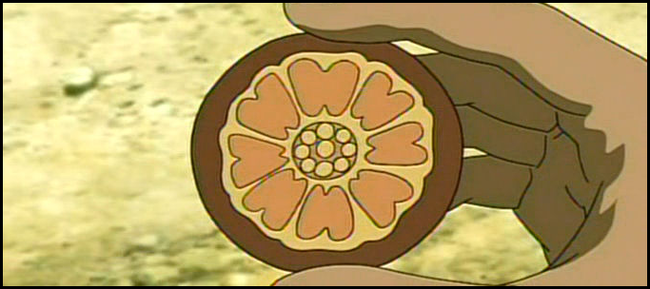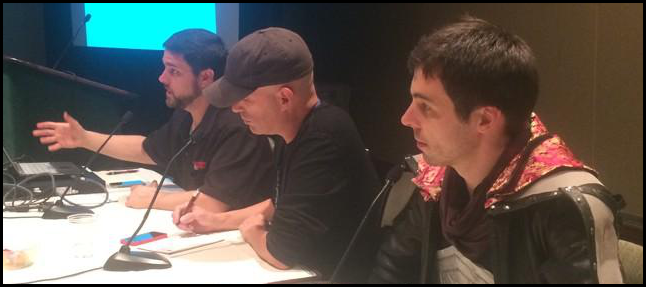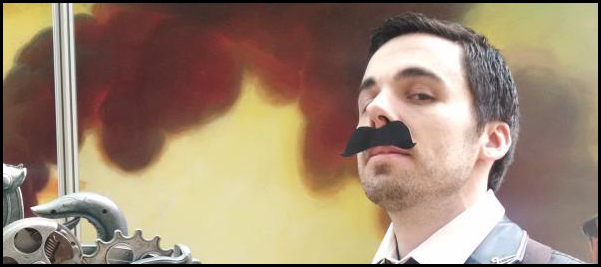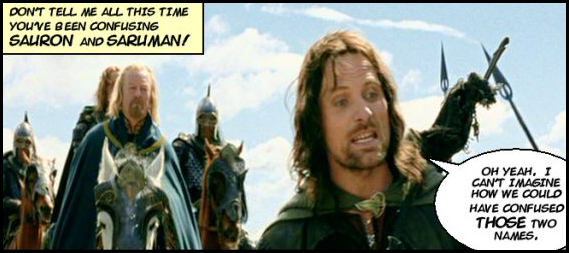Previously, on Dungeons & Dragons…
In my last post, I talked about what I learned from D&D developers Rodney Thompson, Greg Bilsland, and Chris Perkins over labor day weekend at [PAX Prime](prime.paxsite.com). Their panel, Art of the Dungeon Master, was a chance for me to learn about how the industry’s preeminent DMs run their games.
Now, almost two weeks later, I’ve left home and returned to my regular gaming group at school. After a summer away, I think I could actually see the memories of last semester’s games dripping out of my players’ ears. I posted regular campaign journals last year, but I didn’t expect all my players to read through my summaries as classes kick into gear and homework starts to pile up. I desperately needed a fast, lightweight way to refresh my players’ collective memories and smoothly segue into the first session of the semester. My solution to this week’s problem blossomed from a seed planted by Thompson, Bilsland, and Perkins’ timely advice.
At Art of the Dungeon Master, another of the panel’s attendees asked Thompson et al. how to properly run a mystery game. Mysteries might be the hardest genre to capture in RPGs, largely because the medium has the unique trait of merging the roles of actors and audience; the players are both! In traditional media, anything that shocks the audience has already been carefully rehearsed by the actors. In gaming, the players must be willing to fly by the seat of their pants, or trade some amount of surprise as an audience in order to hash out a loose framework of their story with the DM.
But more on that later. My own feelings on mystery games aside (I have yet to try the Gumshoe RPG), Bilsland and Perkins’ advice for running mystery games is readily applicable to games of all styles.
Greg Bilsland: One thing that Chris does in his campaigns, is that he gives us a summary beforehand. It may not be pertinent to what the last session was, but he’ll do “previously on Lost”… and mention things from ten, twenty, forty sessions ago. That gets it right back in our head like “oh, this session’s going to involve that,” and it doesn’t spoil anything, it just gets us interested and excited to see what we’ve got in store.
How subtle a DM is with the information in their recap is entirely a matter of taste, and should be adjusted to fit each gaming group individually, but I would err on the side of being too overt. Try making your recaps like the “previously on…” segments from Avatar: The Last Airbender, which would call back to events that occurred two seasons ago as they became relevant. As a television viewer, I hated getting spoiled like this. Oh, they flashed back to show the Order of the White Lotus? Now I know the episode’s twist involves the White Lotus. As an audience member, I like to be surprised!
A gaming audience thinks they want to be surprised, but being surprised too frequently can stress out and confuse players. Surprise your players only when absolutely necessary. Of course, all gaming groups need to find the balance of out-of-game knowledge and surprise that fits them, but players will not catch every subtle story detail you throw at them. It’s different in visual media like television. Lingering shots on a white lotus pai-sho tile work in a visual medium, but they don’t work half as well in a game of Dungeons and Dragons, where the players’ senses are narrated entirely by the Dungeon Master.
My preference as a DM—which I share with Bisland and Perkins—is to jog my players’ memories with the bare outlines of what may become relevant. With a framework provided, now it’s up to the players to do the legwork of remembering what happened, which gets them invested in the story and keeps them guessing. Now they want to know what the twist is.
Chris Perkins: All I’m doing with these recaps every session is calling attention to things that have happened since the beginning of the campaign that *might be relevant in the session that’s about to be played. It lets them know that they’re…forging ahead on this quest that they’ve put to the side while focusing on something else. I’ll dig back through my notes and cobble together a one paragraph, three sentence “previously on”…that lets me plant in their brains things in the session that they’ve forgotten that may become relevant.*
In my current campaign, three months have passed, both in and out of game. In the span of three months, their characters were swept up in a war that threatens to engulf half the continent. Fifty years ago, an army of orcs conquered the elven forest of Ardennes, and the nearby duchy of Brei has lived in constant fear of attack ever since. Just before my gaming group parted for the summer, the player characters bore witness to the Ardenni orcs’ first attack against their homeland. Three in-game months later, they are deep in the heart of an occupied elven kingdom, fighting for their lives against a foe they know almost nothing about.
In the span of three months, however, even the most engaged group of players can lose sight of what their objective truly is. Why am I fighting the evil sorcerer, again? Is the guy who killed my father allied with these bad guys or not?
A little red flag should be raised in a DM’s mind whenever a player puts the game on hold to ask who this villain is or why they were going after him. It usually means that they either aren’t engaging with the story (which is an issue all its own), or the DM has assumed they’re tracking the story as well as they are. Players rarely track the story as well as the Dungeon Master, because they rarely can see the entire picture. When I rejoined my group after a three month hiatus, I needed to be sure that the entire group could see the big picture. I rewound to the start of spring semester—the beginning of our campaign—and briefly retold the story thus far. Only when everyone remembered what had transpired did I return to the present.
With context reestablished, the adventure began. Everyone knew exactly where they and their fellow party members stood, and they knew they had a common foe: the warmongering orcs of Ardennes.
The final word. Even the most engaged players can lose track of objectives and motivations. Some gaming groups have players who love to take notes, either just for fun or because they may intend to novelize their adventures. Even if the party has notetakers, it’s the DM’s prerogative to make sure that everyone is on the same page. As the chief story teller of the group, they must prime their audience so that they can receive the story without any undue head scratching.
The perfect recap returns all plot-important information immediately to your players’ minds and, most importantly, gets them excited for the game to come!

(Image credit to Avatar Spirit Net [White Lotus picture], and to Seamus Young [DM of the Rings].)



